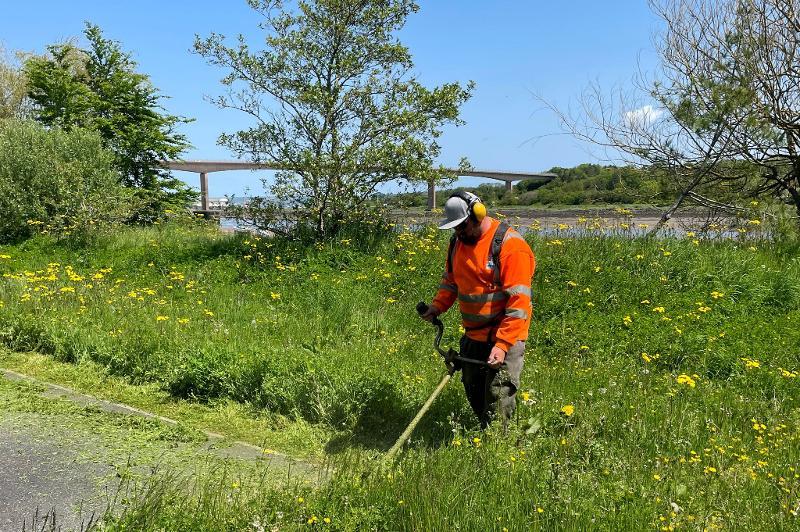Nature flourishes in Torridge as Council pledges to boost biodiversity!


Following the success of No Mow May Torridge District Council has been busy preparing plans to bring a boost of much-needed nectar to pollinators across the gardens, parklands, and verges that it manages. This includes plans to increase biodiversity on council-owned land by planting and allowing wildflowers to grow more freely on specific sites across the district.
Torridge is responsible for managing a range of public spaces including unique habitats such as Northam Burrows, Kenwith Valley and Kynochs Local Nature Reserves. Torridge is also part of the North Devon Biosphere Reserve and the Council has signed up to its ambitious Natural Recovery Plan to protect and enhance biodiversity across the region. As part of its commitment to nature recovery the council has been busy adopting a range of new practices to protect and restore unique ecosystems and habitats in response to the ecological emergency. Working closely with expert advice from a host of organisations and charities such as the Bumblebee Conservation Trust, the inhouse Grounds Maintenance Team has already modified its cutting programme to feed bees, butterflies, and other pollinators throughout the summer. Locations have been specifically selected so that the impact on pedestrians and pathways is minimised and areas can continue to be used by people wishing to exercise, play or relax. Residents can expect to see taller vegetation on council land with the margins cut short to keep the ground tidy and provide favourable conditions for low growing plants. These areas will be cut and cleared at the end of the summer, which will hopefully deliver an improvement in biodiversity year on year.
Torridge residents are also being invited to join in and be part of this crucial role in rebuilding vital habitats, with nearly 97 per cent of flower-rich meadows being lost since the 1970s. Experts agree that when correctly managed, even the smallest patches of grass or a window box can provide significant gains for nature. The plans aim to encourage the more common lawn plants such as daisies, buttercups, clovers, trefoils, dandelions, violets, speedwell, forget-me-nots to flourish along with less common plants such as orchids.
As well as their significance for biodiversity, grasslands are an important carbon sink and the plans for nature recovery are designed to help the authority reduce its carbon footprint. In the future the Council hopes to introduce further tree planting schemes with community orchards and woodlands. The next steps of the campaign will include advice on best practice and practical guides and tips to how people can become more involved in caring for nature. People are being urged to keep an eye on the Councils website and social media in the coming months for the latest updates. Northam Burrows rangers will also continue to run their volunteer events throughout the year as usual, which are a great way for people to get involved and learn new skills. Check out the Northam Burrows web pages for upcoming events and nature workshops.
Donna Sibley, Torridge District Councils Sustainability and Climate Change Officer said:
Torridge Council is committed to supporting biodiversity across the whole district. Managing our sites to support biodiversity is one way we want to create a more sustainable district for the future. Everyone can help and support these initiatives and we would like as many people as possible to join in and take part as even small contribution can collectively make a huge difference. Keep your eyes peeled for information signs at the physical sites and social media channels for more information!
June 23








